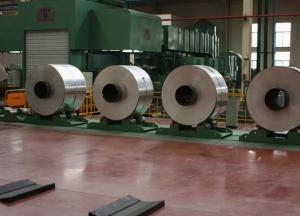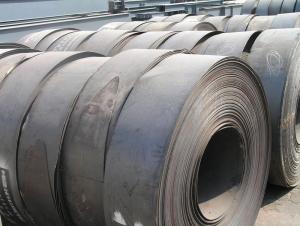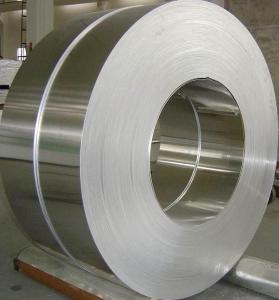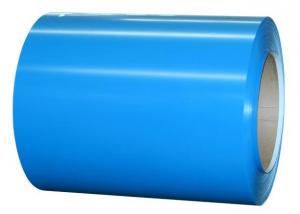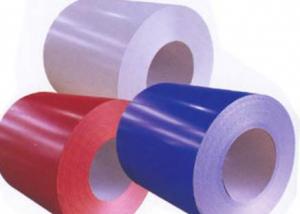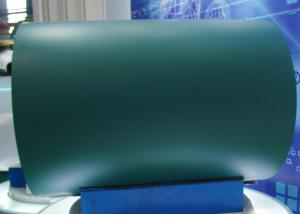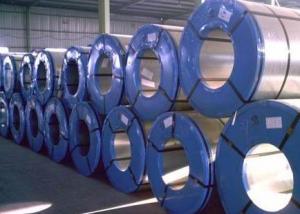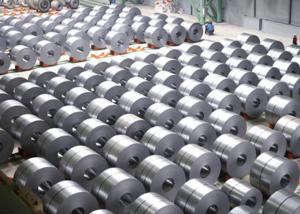Different Size of Hot Rolled Steel ASTM
- Loading Port:
- China Main Port
- Payment Terms:
- TT or L/C
- Min Order Qty:
- 50 tons m.t.
- Supply Capability:
- 50000 Metric Tons Per Month m.t./month
OKorder Service Pledge
OKorder Financial Service
You Might Also Like
Specification Of Different Size of Hot Rolled Steel ASTM
|
|
Thickness |
Width |
Length |
Coil Inside Diameter |
|
HOT ROLLED STEEL COIL |
1.50~25.0mm |
600~2000mm |
|
762mm |
|
HOT ROLLED STEEL STRIP |
1.50~20.0mm |
30~720mm |
|
762mm |
|
HOT ROLLED STEEL PLATE |
6.00~700mm |
500~4500mm |
4000~18000mm |
|
|
HOT ROLLED STEEL SHEET |
1.20~25.0mm |
50~2000mm |
0~18000mm |
|
|
HOT ROLLED STEEL CHEQUERED |
1.40~10.0mm |
900~1500mm |
0~18000mm |
|
Standard &Grade Of Different Size of Hot Rolled Steel ASTM
|
|
JIS |
ASTM |
SAE |
EN |
|
Commercial Quality |
G3131 SPHC |
A569 A635 A659 A1011 CS Type A, B, C |
1006~1025 |
10111 DD11 |
|
Drawing Quality |
G3131 SPHD |
|
1006~1010 |
10111 DD12 |
|
Deep Drawing Quality |
G3131 SPHE |
A622 A1011 DS Type A, B |
1006~1010 |
10111 DD13 DD14 |
|
General Structure (T.S.<490N/mm2) |
G3101 SS330 SS400 G3106 SM400A G3132 SPHT1 SPHT2 SPHT3 |
A36 A283 GR.C A570 GR.30~40 A1001 SS GR.30~40 |
1010~1025 |
|
|
General Structure (T.S.≥490N/mm2) |
G3101 SS490 G3106 SM490A SM490YA G3132 SPH4 |
A570 GR.45~50 A607 GR.45~70 A1011 SS GR.45,50 A1011 HSLAS GR.45~70 |
J1392 050X |
|
Definition Of Different Size of Hot Rolled Steel ASTM
Rolled to its final dimensions while it’s hot enough to scale, our hot-rolled steel is an amalgamation of the various qualities of steel. It can be in the form of plates, sheets and coils. Our Hot-Rolled Steel Sheets and Coils are applied to a wide range of uses such as automobile, electrical appliance, machinery manufacturing, container manufacturing, shipbuilding, bridge, pipeline, and receive high acclaim from our customers for its excellent quality.
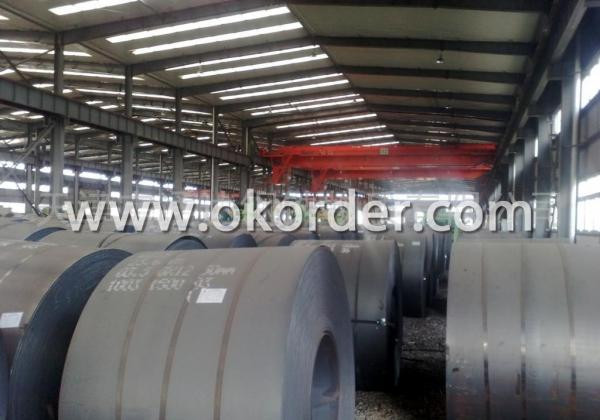

Usage/Application Of Different Size of Hot Rolled Steel ASTM
As raw material for:
Container &Pipe Production
Carbon Structural Steel
Low Alloy Steel
High Quality Carbon Structural Steel
Atmospheric Corrosion Resistant Steel
Low Carbon Steel (Commercial Quality, Drawing Quality, Deep Drawing Quality)
Packaging & Delivery Of Different Size of Hot Rolled Steel ASTM
The packing of coils consists of anti-damp paper, PVC film, hardboard paper, steel box, strapped with steel strips, fitted with locks and edge protectors and guarantees the optimal condition of the delivered goods. Each coil can be additionally fitted with wooden/steel skids(eye to the side) or wooden pallets(eye to the sky).
Bulk shipment packed with steel belt.
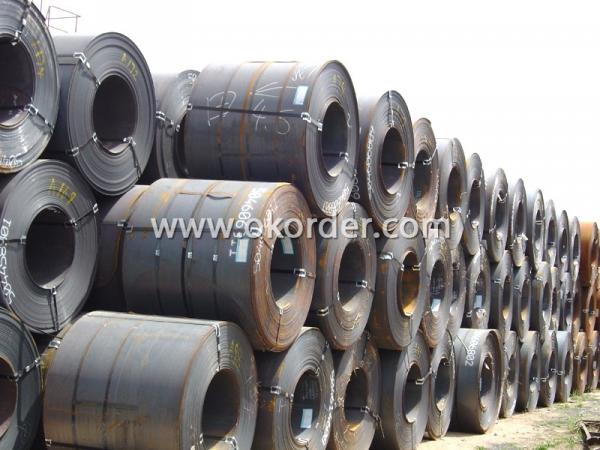
- Q:How are steel pipes used in oil and gas pipelines?
- Steel pipes are used in oil and gas pipelines due to their strength, durability, and resistance to corrosion. They serve as the primary material for transporting oil and gas over long distances, ensuring a safe and efficient flow. These pipes are laid underground or underwater and are capable of withstanding high pressure and extreme temperatures, making them essential for the energy industry's infrastructure.
- Q:What are the different types of steel gratings and stair treads available?
- There are several different types of steel gratings and stair treads available, including welded steel bar grating, press-locked bar grating, riveted grating, and fiberglass grating. Each type has its own unique characteristics and is suitable for different applications, whether it's for industrial, commercial, or residential use. These options offer various load-bearing capacities, slip resistance, durability, and aesthetic qualities, allowing for versatile and customized solutions for different projects.
- Q:How are steel bars used in reinforcing concrete structures?
- Steel bars, also known as rebars, are used in reinforcing concrete structures to enhance their strength and durability. These bars are typically placed in a grid-like pattern within the concrete to provide additional tensile strength, as concrete is strong in compression but weak in tension. The steel bars act as a reinforcement, absorbing the tensile forces that concrete cannot handle effectively. This combination of steel and concrete creates a composite material that can withstand a greater amount of load, making the structure more resistant to cracking and structural failure.
- Q:What are the applications of steel mesh?
- Steel mesh is widely used in various applications such as construction, reinforcement, fencing, landscaping, and industrial sectors. It is commonly used for concrete reinforcement, providing strength and stability to structures like buildings, bridges, and highways. Steel mesh is also utilized in fencing systems, ensuring security and safety in residential, commercial, and agricultural settings. Additionally, it is employed in landscaping projects to support plants and prevent soil erosion. In industrial settings, steel mesh is used for filtration, sieving, and separation processes. Overall, the applications of steel mesh are diverse, making it a versatile and essential material in various industries.
- Q:How is steel used in the manufacturing of kitchen utensils?
- Steel is commonly used in the manufacturing of kitchen utensils due to its strength, durability, and resistance to corrosion. It is used to make various utensils such as knives, spoons, forks, and cookware. The versatility of steel allows for the production of sharp and long-lasting cutting edges, sturdy handles, and easy-to-clean surfaces, making it an ideal material for kitchen utensils.
- Q:How is steel used in the construction of sports facilities?
- Steel is used in the construction of sports facilities for various purposes, such as the framework for stadiums, arenas, and indoor sports complexes. It provides structural support, allowing for large open spaces and the ability to accommodate thousands of spectators. Steel is also used in the construction of roofs and canopies, providing durability and resistance to harsh weather conditions. Additionally, steel is utilized in the fabrication of seating, stairs, and other architectural elements, ensuring safety and functionality in sports facilities.
- Q:How is steel plate cut and shaped?
- Steel plates can be cut and shaped using various methods such as thermal cutting (using oxy-fuel or plasma), mechanical cutting (shearing or sawing), or laser cutting. Once the initial cutting is done, the steel plate can be further shaped through processes like bending, rolling, or forming to achieve the desired dimensions and contours. These methods ensure precise and accurate cuts and shapes, allowing steel plates to be used in a wide range of applications.
- Q:How is steel used in the construction of hospitals and healthcare facilities?
- Steel is used in the construction of hospitals and healthcare facilities for various purposes such as structural support, framing, and reinforcement. It provides strength, durability, and resistance to fire and earthquakes, ensuring the safety and stability of the buildings. Steel is also used in the construction of medical equipment, fixtures, and furniture, making it an essential material in the healthcare industry.
- Q:What are the different types of steel tanks and their applications?
- There are various types of steel tanks used in different applications. Some common types include: 1. Carbon Steel Tanks: These tanks are made of carbon steel and are suitable for storing non-corrosive liquids, such as water, chemicals, and fuel. 2. Stainless Steel Tanks: These tanks are made of stainless steel, which provides excellent resistance to corrosion. They are commonly used for storing corrosive substances, such as acids, solvents, and pharmaceutical products. 3. Galvanized Steel Tanks: These tanks are coated with a layer of zinc to prevent corrosion. They are ideal for storing water, fertilizers, and other non-corrosive liquids. 4. Double-Walled Steel Tanks: These tanks consist of an inner and outer wall, with an air gap in between. They are used for storing hazardous materials to provide an extra layer of protection against leaks and spills. 5. Underground Steel Tanks: These tanks are designed to be buried underground and are commonly used for storing fuel, such as gasoline or diesel, at gas stations or for residential heating. 6. Elevated Steel Tanks: These tanks are raised above the ground on a support structure and are used for storing water in areas with low water pressure or for firefighting purposes. Each type of steel tank has its own specific applications and benefits, and the choice depends on the nature of the stored substance and the intended use.
- Q:How are steel pipes used in the transportation of chemicals?
- Steel pipes are commonly used in the transportation of chemicals due to their strength, durability, and resistance to corrosion. These pipes are used to safely transport various types of chemicals, such as acids, solvents, and corrosive substances, from one location to another. The steel material provides a reliable and secure conduit for the chemicals, preventing leaks or contamination during transit. Additionally, steel pipes can withstand high pressure, making them suitable for transporting chemicals over long distances.
1. Manufacturer Overview |
|
|---|---|
| Location | Hebei, China |
| Year Established | 2002 |
| Annual Output Value | |
| Main Markets | North America Eastern Asia Africa Eastern Europe Southeast Asia Western Europe |
| Company Certifications | ISO 9001;ISO 14001 |
2. Manufacturer Certificates |
|
|---|---|
| a) Certification Name | |
| Range | |
| Reference | |
| Validity Period | |
3. Manufacturer Capability |
|
|---|---|
| a)Trade Capacity | |
| Nearest Port | Tianjin; Qingdao |
| Export Percentage | 50% |
| No.of Employees in Trade Department | 50 People |
| Language Spoken: | English; Chinese |
| b)Factory Information | |
| Factory Size: | 30000 square meters |
| No. of Production Lines | Above 10 |
| Contract Manufacturing | OEM Service Offered |
| Product Price Range | Average |
Send your message to us
Different Size of Hot Rolled Steel ASTM
- Loading Port:
- China Main Port
- Payment Terms:
- TT or L/C
- Min Order Qty:
- 50 tons m.t.
- Supply Capability:
- 50000 Metric Tons Per Month m.t./month
OKorder Service Pledge
OKorder Financial Service
Similar products
New products
Hot products
Hot Searches
Related keywords





